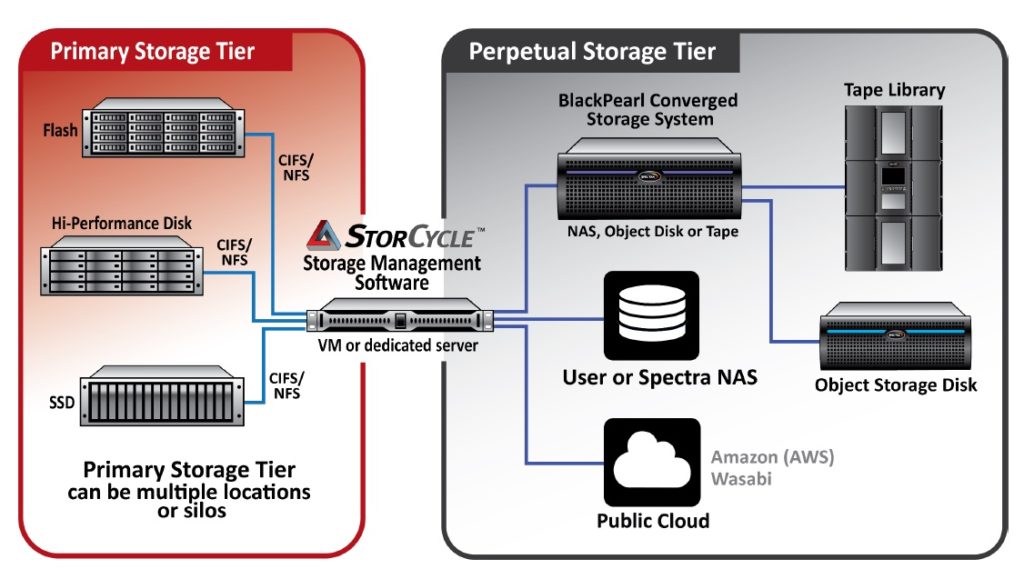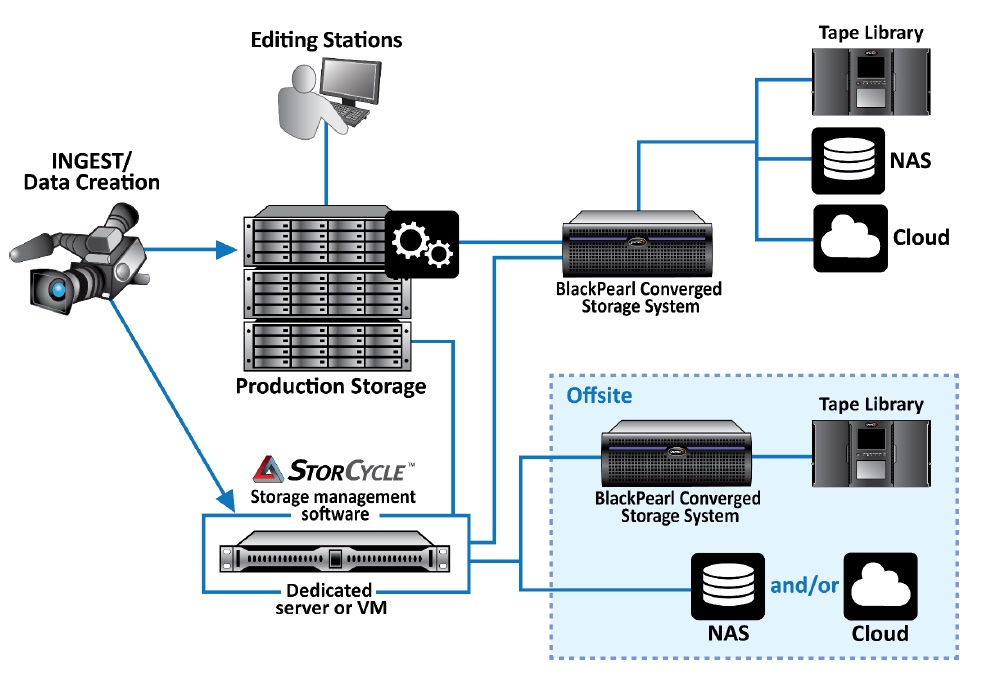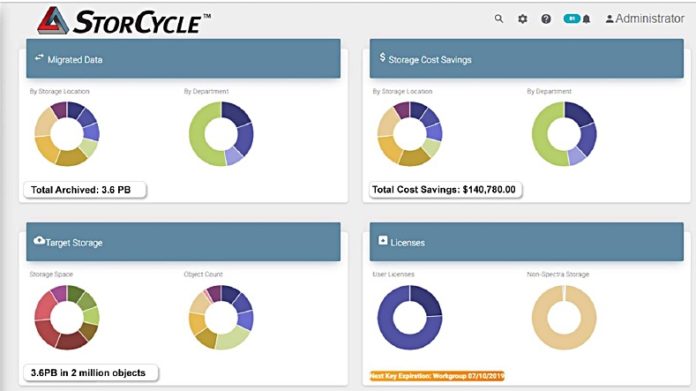Spectra Logic, the tape systems vendor, is entering the storage management market, claiming it solves the problem that most data is stored on the wrong media i.e. expensive and fast storage.
This is the world of HSM (Hierarchical Storage Management) or ILS (Information Lifecycle Management) software. But, often Spectra Logic says, old, infrequently accessed data is generally not moved off storage tiers best suited for more frequently accessed data because software products that manage this are too expensive. Typically they are priced by capacity and can cost hundred of thousands to millions of dollars.
The answer is to automate the process with affordable software and that’s what Spectra Logics’s new product StorCycle HSM is meant to do. The company said StorCycle HSM can be much cheaper than existing software and can free up a lot of costly primary storage capacity, enabling customers to avoid spending cash on no longer-needed all-flash array capacity, for example.
StorCycle classifies storage into two main tiers: primary and perpetual, and moves perpetual data to sub-tiers such as nearline disk, tape or the public cloud.

StorCycle can move files on a primary storage tier to the public cloud, a third-party NAS store or Black Pearl archival storage. Black Pearl is Spectra Logic’s hybrid flash/disk, front-end cache. It stores files as objects on back-end tape devices, Arctic Blue nearline disk or the public cloud.
StorCycle’s overall four-stage job is to locate and identify file data’s state, migrate old stuff, protect it and enable access to it. It runs on Windows Server and builds a file catalogue. Data can be migrated semi-manually at project directory level in a one-time event or auto-migrated continuously. Auto-migration selects file on age and/or size and is directed by settable policies.

Files can be moved in four ways:
- Remove and leave nothing behind
- Copy and leave original data in place
- Leave symbolic link behind if file moved to a NAS target and get extended access latency
- Use HTML link for files moved to tape or cloud targets (.html appended to file name in directory)
App access means using symbolic links – an approach that Komprise, a Spectra partner and now competitor, also takes. HTML access access enables the user to manually restore the target file – similar to the way files are restored from Amazon Glacier – and return it to primary storage
StorCycle has a REST API interface and supports Amazon’s S3 protocol.
Offloaded archive data can be browsed and moved back, to a target NAS say, where it can be mounted and accessed.
With files moved from primary storage, backup processes take less time.
StorCycle has four pricing tiers, starting with three admin staff and unlimited usage for $18,000, and topping out with an enterprise ‘all-you-can-eat’ license for $144,000. Support costs are 15 per cent extra. There is no capacity charge if the customer buys Spectra storage and $50/TB surcharge if they use a third-party NAS.
Spectra says StorCycle is not an HSM
Spectra puts forward the view that StorCycle is not an HSM product. It says the concepts are similar, but HSMs were invented at a time when an entire storage infrastructure was installed onsite and consisted of only disk and tape based systems.
It says HSMs are expensive systems which sit directly within an organisation’s data path. As an HSM moves data from a primary system it leaves a stub file behind in place of the original file. StorCycle doesn’t do this and it does not need to sit in the primary data path.
Blocks & Files thinks that where ‘X’ is a thing that automatically moves data between high-cost and low-cost storage media, then X meets the generic definition of an HSM product.








